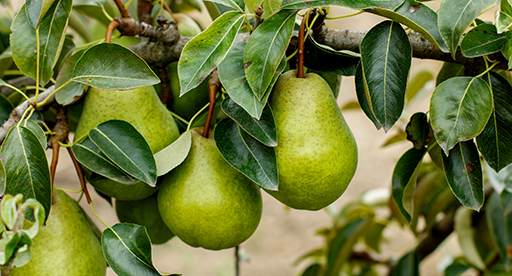
Whether you create your own mini-orchard, or choose to grow a few in pots on your balcony, fruit trees are fun to grow.
A combination of general maintenance and spraying will protect fruit trees throughout the seasons and can help give many years reward of fresh, juicy homegrown fruit!
Prevention
Preventative maintenance is the best approach. With good watering, feeding and cultural practices fruit trees will provide an abundance of fruit, and reduce the need to spray.
Be vigilant, walk the garden regularly and observe! If you see a problem or a potential problem, take action to prevent it spreading.
If you do need to spray it's best to start with a natural, organic solution. If the problem can't be controlled naturally you may need to try a more heavy hitting solution. Then when it's under control you can go back to more natural seasonal maintenance.
Before spraying you should take into consideration how it will affect beneficial insects such as lady birds, bees, praying mantis, butterflies and other garden pollinators.
Easy steps to reduce damage from pests and diseases
- Choose a disease resistant variety - this will reduce the need to spray.
- Choose a variety that suits your climate. For example, in frost prone areas choose late flowering and fruiting varieties.
- Prune early on to establish a good frame work for fruit trees.
- Pruning to a vase shape opens up the canopy and improves air circulation around the tree, which also helps ripen fruit in summer.
- Regular feeding, watering and summer pruning keeps plants actively growing which means they're less likely to be affected by pest and disease.
- Mulch in spring and autumn to protect and nurture the soil, and in summer to conserve soil moisture.
- Plant companion plants to attract beneficial insects and pollinators to the garden. Lavender, rosemary, purple tansy (phacelia), nasturtium and borage are great choices.
Pruning
Pruning at the right time is important for good fruit tree health and for producing lots of fruit.
- Prune stonefruit, like peaches, nectarines, plums and apricots, in summer to prevent silverleaf and other diseases.
- Prune pip fruit, like apples, pears, nashi and quince, in winter. Summer pruning is also beneficial.
Always prune trees on a dry sunny day using clean sharp tools. Cutting tools can spread disease from plant to plant. Wipe tools down using methylated spirits or bleach when moving from tree to tree and after use.
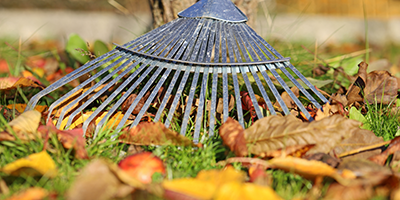
Autumn maintenance
- As leaves start to fall from deciduous fruit trees in autumn, apply a copper based spray and a horticultural spraying oil. These can safely be mixed together. The oil will smother any lingering insect pests and insect eggs that may be laying dormant, as well as fungal spores that cause diseases such as brown rot, leaf curl, powdery mildew and leaf spots.
- Collect any fallen fruit that may be infected with fruit worm, codling moth or guava moth larvae.
- Collect any fallen leaves that may be infected with fungal spores, such as mildews and black spot.
- Dispose of any infected fruit and leaves you've collected in the rubbish, don't put them in the compost.
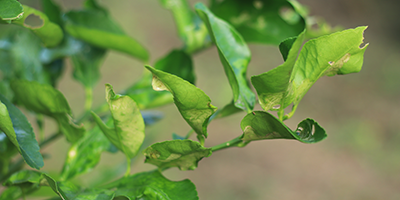
Winter maintenance
- Capture overwintering insect eggs and fungal spores by reapplying the copper-based spray and horticultural spraying oil from autumn.
- For deciduous trees (but not apricot trees which are sensitive to sulphur), apply lime sulphur to control overwintering mites, scale insect and fungal diseases such as leaf curl, rust, black spot and botrytis. Lime sulphur is also good for removing moss and lichen off older trees.
- Remove any tree prunings and leaf litter from around trees that may be infected.
- Dispose of your tree prunings and leaf litter - don't put them in the compost as this will spread any disease and insect pests.
Spring maintenance
- Fertilise fruit trees in early spring using a general garden fertiliser or specialty fruit fertiliser.
Warm, damp spring weather is the ideal breeding ground for fungal diseases. It's also a time of soft new growth and emerging flowers which are vulnerable to diseases such as leaf curl (peaches and nectarines), black spot (apples and pears), botrytis (strawberries and other berries), and bacterial blast (stonefruit). Leaf curl appears early in the season and disappears once the temperature warms up.
- Preventative sprays of copper in spring help protect trees against disease. If it rains, spray the tree again. Once flowers emerge, stop spraying with copper until later in the season so you don't burn any soft new growth.
- Collect up any curled leaves that have fallen to prevent the disease spreading in the soil. Planting disease resistant varieties can help avoid leaf curl as some varieties are more susceptible than others.
Keep an eye out for insect pests such as aphids, scale insect, passionvine hopper, white fly, mites and mealy bug! Codling moth are active in September/October as they emerge as moths from overwintering in the soil or bark of the tree. The moths lay eggs on small developing fruit on pip fruit. Guava moth don't have a seasonal cycle, they move from host to host all year round.
- Use spraying oil at regular intervals to break the life cycle and control insect pests. Alternatively you can try a safe low toxicity insecticide.
- Sometimes the easiest way to control passionvine hopper and white fly is to hose them off at regular intervals, especially on citrus.
- Place pheromone traps in pip fruit trees to capture the male codling moth and break the lifecycle. Grease bands can also be used around the tree to prevent larvae climbing up the trunk from hibernation.
- Hang guava moth traps in feijoas and citrus as soon as the fruit sets. Replenish traps and keep them hanging until the fruit is harvested.
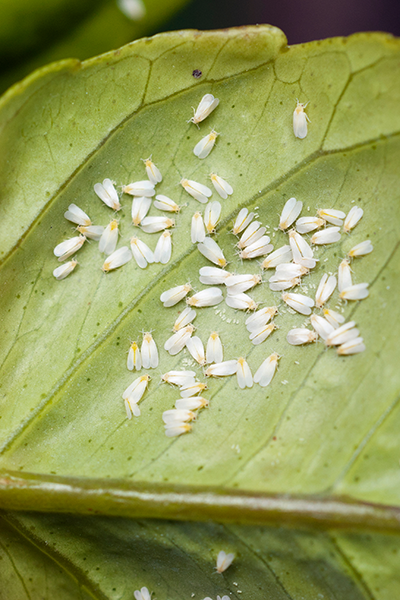
Summer maintenance
Protect your trees from a hot, dry summer. Mulching protects the roots of your fruit trees from heat and drought as well as replenishing the soil with organic matter, encouraging earthworm activity, and improving soil structure.
- Mulch around trees to keep weeds and grasses at bay. The weeds and grasses can harbour insect pests and diseases, as well as compete for moisture and nutrients.
- Keep trees consistently watered. Once a week for established trees and 2-3 times a week for newly planted trees.
- Copper and oil can be applied throughout summer at a diluted rate, this prevents soft new growth from burning.
Brown rot becomes a problem in early summer with stone fruit, especially plums, peaches and nectarines. Once you have fruit on the tree there's not really any safe spray that can be applied, but a few cultural practices help:
- Summer pruning opens up the canopy to a vase shape which improves air circulation and helps ripen fruit.
- Collect any rotten fruit and fallen leaves and make sure you dispose of them in the rubbish or by burning - don’t compost infected tree prunings and leaves.
- Continue using copper spray through winter to minimise the effect of brown rot.
As in spring, keep an eye out for insect pests such as aphids, scale insect, passionvine hopper, white fly, mites and mealy bug.
- Control with spraying oil at regular intervals or a safer low toxicity insecticide. Repeat applications are needed to break the insect life cycle.
- Control passionvine hopper and white fly by hosing them off at regular intervals, especially on citrus.
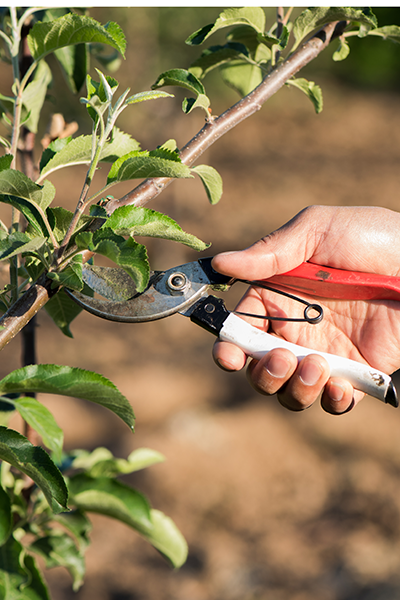
Other tips
- Avoid spraying when bees and other pollinators are foraging. Spraying early in the morning or late afternoon is best.
- When spraying anything on edible plants, check the time between spraying and being able to consume the fruit (the withholding period). Even natural controls can have withholding periods. And always wash fruit before you eat it!
- We need to accept that sometimes the weather can be against us, but there is always next season, so don’t give up!
Post a comment
Seasonal guide to fruit tree maintenance Comments
A great guide. I am not completely new to gardening maintenance & growing, I’m 71, but wish I had read this guide some time ago. Thanks Tui. I intend passing on this information.
John
Thanks for the feedback John, it is great that we never stop learning in the garden.
Lianne
Thank you for the handy tips.
Ann Clemance